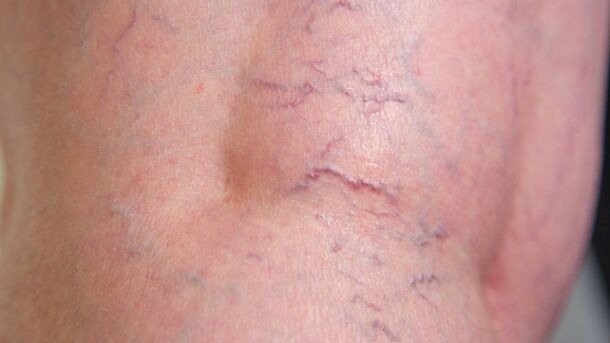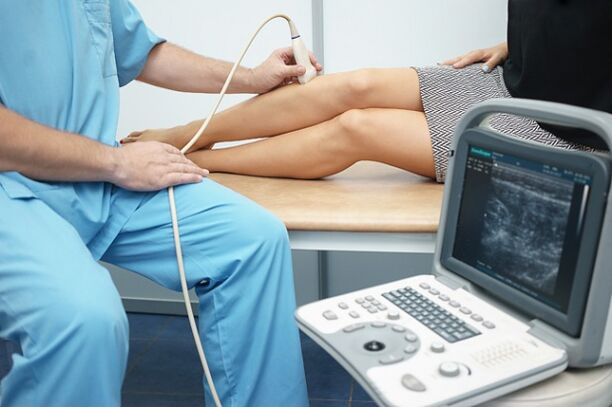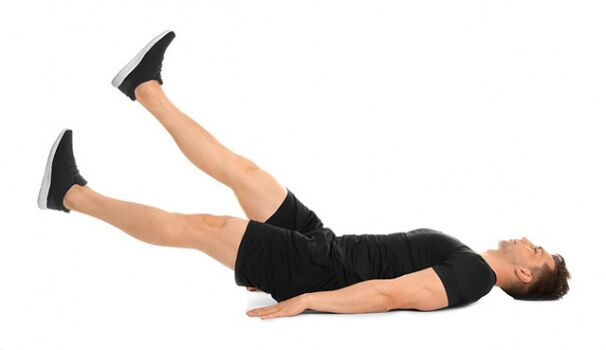Vascular diseases have different symptoms and it is not always possible for a person without medical education to understand them. Any chronic disease has its own clinical picture and requires certain treatment. There is a classification according to the nature of the disease, so there are mild and severe pathologies.

What are reticular varicose veins? What diseases does he refer to? What if you have this diagnosis? Is it dangerous? How and when to treat reticular varicose veins of the lower extremities? You will find answers to the most frequently asked questions in our article. We will tell you not only about cardiovascular diseases, but also about the causes, symptoms and main methods of treatment.
Reticular varicose veins of the lower extremities: what is it?
The appearance of dilation of thin veins under the skin, a few millimeters in diameter, are called reticular veins or reticular varicose veins. In other words, this type will manifest itself as an increase in the pathological venous pattern. Often, small blood vessels in the upper papillary layer of the dermis are affected at the same time, and teleinjections occur - vascular "nets" or "stars". The patient develops linear, stellar, reticular, or branched "patterns" of intertwined veins and filamentous sapen veins. They are blue, green, ruby or lilac.

Often, reticular varicose veins are localized in the lower extremities, affecting the veins of the lateral surface of the thighs and upper legs. In the early stages of varicose veins, varicose veins in both lower extremities are very common. It should be noted that the area of localization of the altered vessels may be not only the area of the legs and feet as a whole, but also the face, abdomen and other parts of the body. The owners of an open venous pattern on the skin of the legs are usually women, sometimes men.
How serious is this diagnosis? The nature of the disease is classified as mild due to the impact of thin intradermal vessels, the degree of manifestation of venous insufficiency is primary. It is generally accepted that the only concern will be the non-aesthetic appearance of the patient diagnosed with reticular vessels of the lower extremities. However, not all experts agree.
Expert opinion
Although reticular varicose veins have a mostly mild course, it is primarily a disease of the superficial veins, which is considered one of the first manifestations of venous insufficiency. If you do not pay attention to varicose veins for a long time, it is possible that the symptom complex will increase and the condition will worsen until varicose and trophic ulcers appear at the site of the vascular "mesh".

Reticular varicose veins of the legs: causes
In most cases, vascular diseases develop as a result of a combination of factors that trigger the pathological process, so they are considered multifactorial. However, when studying the pathogenesis of vascular diseases, the main reason for the appearance of reticular vessels is hereditary predisposition. In individuals with unfavorable combinations of hereditary factors, a certain structure of the vascular wall is already determined, which leads to the appearance of varicose veins. For this reason, the fetus has a congenital weakness of the vascular walls caused by intrauterine exposure to pathogenic factors.
In addition to the above, the predetermined structural features of the venous canals contribute to the development of varicose veins:
bad habits - alcohol and smoking;
unbalanced diet, passion for diets (including vegetarians);
hormonal imbalance and hormone therapy;
pregnancy, abortion, childbirth, menopause;
overweight;
inactive lifestyle;
arterial hypertension;
severe liver damage;
allergic reactions;
occupational activities associated with static loads on the legs ("sitting" / "standing" work);
wear uncomfortable clothes and shoes (squeeze the elements, shape the underwear, wear tight shoes, etc. ).

Unfortunately, the initial conditions that lead to the development of reticular varicose veins are not limited to this list. Customers of beauty salons that do sugaring, chemical peels and solariums are also at risk; and those who visit a gym that does strength training on their feet, as well as those who choose a sport with a high level of shock load (jumping, grabbing, etc. ).
Signs and symptoms of reticular varicose veins
What is the clinical picture of reticular varicose veins? One of the first and often the only symptoms in the early stages of varicose veins is a subcutaneous venous pattern that is clearly visible in red-cyanotic color. The mesh, which consists of very thin veins, is mainly visible on the inner and back surfaces of the thighs and ankles. In very rare cases, pain may occur when pressed.
Reticular varicose veins are characterized by edema, tension, heaviness, itching, intradermal bleeding, spontaneous fever in the legs, and involuntary spasm of the calf muscles.
Ignoring the initial symptoms of the disease leads to its progression and complications. Remember that with completely healthy veins, they will never be visible. Therefore, a spider web made of the finest strands of blood vessels is probably temporary, although it will not cause you any discomfort. If any disease is treated in time, it is always easier to eradicate and perhaps ineffective.

Reticular varicose veins of the legs: treatment
In this part of our article we will talk in detail about how to treat reticular varicose veins. We will answer the most important questions - if you find in yourself the symptoms of varicose veins, which doctor is treating you, and many others, what should be the sequence of actions.
When one or more symptoms of reticular varicose veins are detected, the first step in recovery should be to see a doctor. In this case, you can contact a vascular surgeon, angiologist or phlebologist with a therapist, or you can go directly to these doctors, who have a narrow specialization in venous pathology. Any of them will first interview the patient and examine their legs, feet and thighs. An initial diagnosis will then be announced and an examination plan will be developed to make a final clinical diagnosis. The patient's examination plan will include the necessary diagnostics - laboratory and instrumental. An ultrasound examination will be scheduled to provide maximum information about the condition of the deep veins, the severity of the superficial changes, and the consistency of the perforated vessels. Based on the results of the examination, the doctor will re-evaluate the symptoms of the disease, choose the optimal treatment and make recommendations.
How are reticular vessels treated? Their treatment, like the treatment of any vascular disease, is carried out in two ways: conservative and operative. Each of the methods includes a number of methods.
Conservative treatment of varicose veins includes expert advice on lifestyle and nutrition. Unfortunately, despite the obvious benefits of the principles of proper nutrition and a healthy lifestyle, we do not pay enough attention to these concepts. Without bad habits and moderate physical strength, good rest, proper daily routine and nutrition, all systems and organs of the human body will never function normally.
Proper nutrition helps to improve health and prevent all diseases.
To a patient with varicose veins:
it is not recommended to eat smoked, spicy, fried foods, it is also necessary to reduce the consumption of salt and sweets;
it is not recommended to take significant breaks between meals and starvation;
large amounts of berries, fruits, vegetables and herbs should be kept constant in the diet;
Eating whole wheat, rye, oats and barley for breakfast can be helpful.
it is better to prefer fresh juices than carbonated drinks.

It is difficult to restore your normal behavior in accordance with the basics of a healthy lifestyle and start eating right only in the beginning. By making an effort and following the doctor's recommendations, the patient will make a significant contribution to improving their quality of life.
Reticular varicose veins provide treatment with water procedures at home. A contrasting shower for the feet stimulates blood circulation, optimizes the function of the vascular valve apparatus and increases the tone of the venous wall.
Expert opinion
Eliminate the symptoms provoked by reticular varicose veins, drug treatment is called. The effect on the veins is carried out in a complex way: internally - in tablets and capsules, as well as externally - by applying an ointment, gel or cream. Medications are also used to prevent the development of the disease and eliminate the risk of complications.
For this purpose, doctors prescribe drugs of the venotonic group based on synthetic and natural plant components. These drugs have a broad therapeutic effect and have a systemic effect:
helps improve blood circulation;
relieve pain syndrome and heaviness in the legs;
has a positive effect on strengthening the vascular wall and capillaries;
prevent the development of swelling;
stop the inflammatory process;
to help get rid of hematomas, etc.
The dose of drugs and methods of their use are determined by the attending physician, taking into account the symptoms of varicose veins and the dynamics of its development.
Such a factor should be given special attention in the development of vascular pathologies such as pregnancy, and especially how to accurately treat reticular varicose veins during this period. When carrying a fetus, all treatments should be as safe as possible.
To reduce reticular varicose veins, including during pregnancy, experts recommend compression underwear.
These can be knee-length, socks or elastic bandages. The compression class directly affects the type of canvas - it can be both prophylactic (0-1 degrees) and therapeutic (2-3 degrees).
In cases where reticular varicose veins need to be removed immediately or the disease progresses rapidly, miniphlebectomy, laser treatment (photocoagulation), microsclerotherapy of telangiectasia and sclerotherapy of reticular veins are used. Which method is more appropriate for the treatment of reticular varicose veins is determined by the doctor individually for each patient.

Reticular varicose veins: gymnastics
Experts recommend systematic therapeutic exercises to normalize lymph flow, venous blood flow, peripheral circulatory processes and increase vascular tone.
The set of exercises is difficult and varied. In the exercise therapy room for each patient, a specialist will develop 3-5 action programs that should be performed at least twice a day, 10-15 times in each approach. The exercises will be tailored to the patient's physical capabilities, age and other characteristics.
The most popular exercises are "maple", "cycling", "scissors", rolling from heel to toe, walking on the spot, etc.
The specialist will tell you how to do this or that exercise correctly and what to avoid when choosing exercises for yourself.
Reticular varicose veins: treatment with folk remedies
Some patients with reticular varicose veins of the lower extremities are interested in the question, is it possible to treat with folk remedies? The use of alternative medicine as part of complex therapy is not excluded.
Symptoms can be relieved with the help of folk recipes for internal and external use. Based on the results of many years of experience, they are considered to be extremely effective products based on garlic, maple buds, horse chestnut, verbena, nutmeg, knotweed and natural apple cider vinegar.
As a rule, the most popular recipes have no specific contraindications, but it is always worth remembering that self-medication can cause irreparable damage. Therefore, the use of any prescription for alternative medicine in the treatment of varicose veins, even the most harmless at first glance, should always be agreed with the attending physician.
Contact a specialist for an accurate diagnosis.























